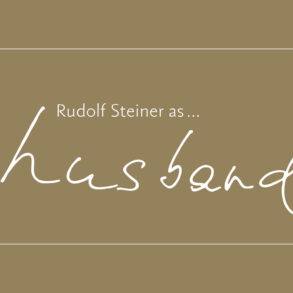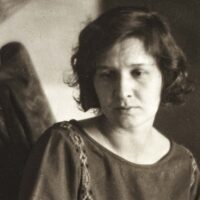As we step into a new year and a new era for anthroposophy, Mary Stewart Adams steps into a new position, as General Secretary of the Anthroposophical Society in America. In this interview with Charles Cross, she shares her thoughts about her new role, the founding of the Anthroposophical Society, the meaning of being a member, and the importance of this one-hundred-year anniversary.
Thank you, Mary Stewart Adams, for doing this interview. What does it mean to you to be the new General Secretary of the Anthroposophical Society in America? How are you thinking about your role?
The General Secretary of the Anthroposophical Society in America is a member of and works closely with the General Council—a body made up of individuals that represent the three regions in the United States (eastern, central, and western, as determined in 1978) as well as at-large members that are recognized as being active leaders in anthroposophy in the United States. The General Secretary is a part of that body and, as its president, holds a particular responsibility, as an individual and in the movement as a whole. As I see it, the general secretaries of the various countries are like extended members, out in the world, of the leadership team at the Goetheanum. And so we work in concert. If I were to take an image from Rosicrucianism, it’s like serving as doorkeeper, standing at the various points of intersection in the movement, such as the space where the movement is being expressed within the country out to the worldwide movement; and then also from the country to where the movement is headquartered in Dornach.
Two or three months into this position, I’m experiencing that the position affords a broadened view, which brings the ongoing responsibility of striving to discern the voice that is speaking through the movement, in multiple contexts. This requires a certain amount of steadiness and stillness, to really hear that voice, so that the decision-making, planning, and organizing can be informed not only by the voice of what’s moving through anthroposophy in the local community and the national environment, but in the world.
I think it’s also a position that is, in a certain respect, defined by the person who holds it. And I think that this is important because, again, as Rudolf Steiner described in the Christmas conference, the way we organize ourselves is based on human beings and relationships, not merely on principles or job descriptions.
What does the Anthroposophical Society mean to you? How do you understand the events that led to its founding?
First, let me say that I’m honored that you asked me the question. I have a picture of it, and I expect my understanding will grow and be shaped and formed by what I experience.
One way I picture it, is that the Society could be imagined as a body. Through the Christmas Conference meeting 100 years ago, Rudolf Steiner articulated the structure of that body. The School for Spiritual Science within it is like the soul. The research within the School is about the spiritual world and how we can create avenues of access for the spiritual world out into the world. It isn’t a requirement for an individual to join the Society in order to do this kind of work, but there is an element of exchange between self and other, between human being and the spiritual world, that is specifically articulated through membership in the School formed the way it is by Rudolf Steiner.
The original Society was formed in December of 1912, and although Rudolf Steiner guided those involved with it, he was not a member of that Society as it was formed then. For me, this is what makes his statements on December 24, 1923 so important—when he describes his decision to take on the presidency of the newly-founded Society and then later in the conference, on December 28, 1923, when the statutes are passed, to add an addendum to the second statute regarding the relationship of this new Society to the Society established in 1912.
The taking-on of the presidency was probably not an easy decision for Rudolf Steiner. I understand that there was a certain factionalism happening, and in order to sustain harmony and the opportunity for anthroposophy to really find its way in the world and into human life, Rudolf Steiner made the difficult decision to take on the leadership of the anthroposophical movement. But I would say, rather than just taking on the leadership, what he did was he joined the Society.
Can you explain more about the discord that was present and why Rudolf Steiner joining the Society himself was important?
From what I understand, there was a particularly strong impulse being carried by the youth, and they were feeling unmet by what was happening in the existing structure. In order for the Society to not split apart, Rudolf Steiner felt it was necessary for him to join the Society, to allow the two groups to meet—the elders that may be described as an old guard, holding tightly to something that was dear to them, and those who were coming out of an impulse that wasn’t necessarily recognizable yet. Rudolf Steiner made himself the portal between them. For me, what Rudolf Steiner is doing there, is making it possible for the being of Anthroposophia to express itself both through those who felt they had been carrying the movement intimately for a long time and those who were just newly coming to it.
I also understand that, as an esotericist, it was very clear to Rudolf Steiner that taking up the administration of human affairs in the world may have circumvented or, in a certain way, adversely affected his relationship with the spiritual world, especially because the spiritual world does not get involved in the administration of human affairs. To take up the presidency of the newly-formed Anthroposophical Society involved the risk that he would lose the very thing that was allowing him to guide this movement. It was a tremendous task to undertake.
This was happening 100 years ago, but there is an ongoing aspect of this decision to take up something on behalf of human beings out of spiritual awareness. To me, we can do this again and again and again—try to meet each other, knowing that we risk something in surrendering to the encounter with the other. We have to be willing for the consequences of this kind of surrender, as, it would seem, Rudolf Steiner was!

Why would one become a member of the Society?
For me, membership in the Society is like answering an invitation to join in this good work, which is a work that should never be finished. It’s a step that has an organizing effect. There are very definite descriptions of the spiritual world that come through Rudolf Steiner and what would be identified as the anthroposophical worldview. Taking a step into membership is saying, “I seek to explore the spiritual, through anthroposophy specifically.” You might have access to the spiritual world without becoming a member, but once you take on membership, the focus becomes sharper and clearer.
In the conversations that I’ve had over the years, there are varying experiences that individuals have when they join the Society, and these seem related to a specific karma. It doesn’t mean that there is a prescribed karma that says, “Thou shalt do this, or thou shalt not,” but that membership in the Society has an activating effect on one’s karma, on your karmic relationship to this spiritual stream. It is a recognition that says to the spiritual world, “This is my path. This is something to which I, as Rudolf Steiner did, join my karma as an individual in the world at this moment.”
And that’s hard work because it’s not clean, it’s not prescribed, it’s not uniform. It’s saying, “I intend to stand in the front line of what is a very difficult moment in history as a spiritually awake person and try to meet fellow human beings who have taken up this same task.” Who are we to each other, and how are we understanding the call of the spiritual world now? Anthroposophy, or the being of Anthroposophia, can help more specifically and intimately when we have committed our will to join with that.
Was the School for Spiritual Science then also founded at the Christmas Conference?
From what I have read, early in the 1900s, when Marie von Sivers and Rudolf Steiner met, she asked him the question that led to his being able to describe the engagement with the being of Anthroposophia. So the movement became more formed through Marie von Sivers’ question regarding the Christian evolution of Western humanity—this has to do with establishing the anthroposophical movement. Later, it was a question by Ita Wegman that specifically resulted in the School for Spiritual Science, or the Michael School, and its First Class, given in 1924. There had been esoteric lessons that were being given, even coincident with the first establishment of the Anthroposophical Society in 1912, and some of that is rooted in how Rudolf Steiner was articulating an experience of the spiritual world that was different from what was being expressed through the Theosophical movement. But after the Christmas Foundation Meeting of 1923/24, this took on a specific form.
The original Society was founded in December of 1912, and Rudolf Steiner gave the first address to this newly founded Society in February of 1913. As I understand it, this is one of the very few places where Rudolf Steiner describes the being of Anthroposophia. He frames this being in the context of Dante and his Beatrice by pointing out how Beatrice is not just a flesh and blood human being. Rather, Dante, as a master poet and an initiate, describes her as a spiritual goddess descending, a celestial goddess that was experienced in ancient times as Sophia, as Philosophia. In 1913, Rudolf Steiner puts Dante’s Beatrice in line with this Sophia and then points toward the being of Anthroposophia, who’s descending toward the human being from out of the spiritual world, entering intimately into the anthropo, into the human being, and then emerging and leading on from the human being. This divine wisdom is first outside, then descends toward the human being, into whom it enters, to then leads from the human being toward the greater self. The Sophia becomes the Anthroposophia.
So, the Society is established in 1912, it’s refounded in 1923, and then the School with its Class Lessons is articulated in 1924, at the same time that the Karma Lectures are being given. I see the Class Lessons and the School as supporting the activity of accessing the spiritual world through the lens of anthroposophy and supporting the being of Anthroposophia. The body of this being is formed out of the coming together of human beings who recognize that this is what they want to join with in the world.
We’re celebrating the one-hundred-year anniversary of the Christmas Conference. How are you thinking about this rhythm of time?
Because it is a living stream, anthroposophy, too, has its stages. There’s in-breath and out-breath. There’s bud, there’s blossom, there’s fruit, and seed. So this is a question for me: What now gets activated through this 100-year anniversary of the Society itself, through the deed of the Christmas Conference? And at what stage are we now?
One hundred is three times 33 and a third, a number which holds the Mystery of Golgotha, the incarnation of the Christ being into the earthly stream of humanity. There’s also the unique indication of a 100-year rhythm in the founding documents of the Rosicrucian stream, specifically in the Fama Fraternitatis, where the six principles that the brothers of the Rosy Cross commit themselves to are listed: to help one’s fellow human beings, to bring healing, always gratis; to wear the dress of the place where they’re working; to use the sign and seal of Christian Rosenkreutz; to meet each year on Christmas Day; and to keep the order secret for 100 years! These are elements that also show up in the Christmas Conference 1923/24. The Foundation Stone is laid on Christmas Day, and through it, we encounter the Rosicrucian sayings. We can experience the “sign” of Christian Rosenkreutz in the eurythmy of the Foundation Stone, and we’re 100 years down the road. These things are there for those who can see them, which for me, points to the reality that here is something, an activating engagement, that intends to be ongoing. We are always making a new beginning, and as with all great epics, we begin in the middle, in medias res, midway through an ongoing journey, and it is the journey of our life.
Title image Mary Stewart Adams









